Napoleon launches assault on Smolensk (17 August)
Fresh from their decisive victory at Salamanca on 22 July, Wellington and his army made a triumphal entry to Madrid. One of his soldiers recalled 'deffening shouts of; "Vivi les Angoles, Vivi les Ilandos"'. 'The inhabitants testified their Joy,' wrote Captain Bragge. However, Private William Wheeler of the 51st complained, 'But amidst all this pleasure and happiness we were obliged to submit to a custom so unenglish that I cannot but feel disgust while I am writing. It was to be kissed by the men. What made it still worse, their breath was so highly seasoned with garlick, then their huge mustaches well stiffened with sweat, dust and snuff, it was like having a hair broom pushed into ones face that had been daubed in a dirty gutter.' Wellington was admitted to the Order of the Golden Fleece, given a large estate near Granada and appointed Generalissimo. He was surrounded by women wherever he went, causing an ensign in the Coldstreams to remark: 'Lady Wellington would be jealous if she were to hear of his proceedings. I never saw him in his carriage without two or three ladies.' After this high point came the failure to capture Burgos and a tough tactical withdrawal in terrible weather to Portugal, leaving the French once again in command of Spain. However, Wellington's successes of 1812 and the drain on French resources caused by Napoleon's activities to the east enabled him to go onto the offensive the following summer with excellent prospects of final victory.
On the same day Napoleon was closing in on the city of Smolensk and on 17 August, he launched his assault on Smolensk just after midday. By 4.30pm, at the end of the afternoon's fighting, Marshall Ney had cleared the southern part of the city and was on the Dnieper. The Russians withdrew the next day but left a key ford unprotected, allowing Ney to cross and immediately harass them. On 19 August Ney engaged the Russian rearguard at Valutino. This turned into a major battle, which could have been decisive, if Junot and Murat had appreciated the opportunity to outflank Barclay, taken the initiative and fully committed their Corps. As it was, the Russians extracted themselves and fell back further east with some protection from the weather. They were to stand and fight next at Borodino on 7 September and on 14 September Napoleon had won his empty and fatal trophy, Moscow.
On the same day Napoleon was closing in on the city of Smolensk and on 17 August, he launched his assault on Smolensk just after midday. By 4.30pm, at the end of the afternoon's fighting, Marshall Ney had cleared the southern part of the city and was on the Dnieper. The Russians withdrew the next day but left a key ford unprotected, allowing Ney to cross and immediately harass them. On 19 August Ney engaged the Russian rearguard at Valutino. This turned into a major battle, which could have been decisive, if Junot and Murat had appreciated the opportunity to outflank Barclay, taken the initiative and fully committed their Corps. As it was, the Russians extracted themselves and fell back further east with some protection from the weather. They were to stand and fight next at Borodino on 7 September and on 14 September Napoleon had won his empty and fatal trophy, Moscow.
Further reading
For the battle of Salamanca, which opened the way to Madrid, see Campaign 48: Salamanca 1812 Wellington Crushes Marmont, and to place this campaign in its context, turn to Essential Histories 17: The Napoleonic Wars (3) The Peninsular War 1807-1814.
For Napoleon's advance to Moscow, including the battle of Smolensk, Essential Histories 9 The Napoleonic Wars (2) The empires fight back 1808-1812 follows the journey of Napoleon and his armies through the climactic three years from 1809 to 1812, and through Austria, ultimately to Moscow and back.
For more general information on this period, Essential Histories 3 The Napoleonic Wars (1) The rise of the Emperor 1805 - 1807, and Essential Histories 39: The Napoleonic Wars (4) The fall of the French empire 1813-1815 complete the coverage of the Napoleonic wars. Then for more detailed information on any aspect, look at the full listing of over 130 Napoleonic titles here.
An extract from Campaign 48: Salamanca 1812 Wellington Crushes Marmont
Garcia Hernandez: the epilogue to Salamanca
Wellington's cavalry, the King's German Legion excepted, has never really enjoyed a very favourable press as regards its performance in the Peninsula. However, the battle of Salamanca saw the cavalry at its most destructive, with Le Marchant's devastation of the centre of the French army. Yet the battle itself was followed the next day by another demonstration of just what could be accomplished by heavy cavalry in the right circumstances. Indeed, the incident, at Garcia Hernandez has long since been recognised as one of the rare instances of cavalry breaking an enemy infantry square.
The morning of 23 July 1812 found the French army limping away from Salamanca, battered and bruised after its mauling the previous day. Hundreds of French troops were taken prisoner as they wandered round in small groups after becoming separated from the main body of the retreating French army. Wellington, meanwhile, sent Anson's light cavalry in pursuit of the French rearguard, he himself riding with the leading squadrons of light dragoons.
The road to Valladolid had previously been the obvious route for the French army, but after the events of the preceding day this was now out of the question. Indeed, such a course would have taken Clausel's men right across the front of the victorious Allied army. Instead, Clausel's men were retreating to the east, having crossed the Tormes at Alba de Tormes.
Anson's troops were followed by the 1st and Light Divisions, which had played little part in the victory at Salamanca the day before. Bock's brigade of the King's German Legion, the 1st and 2nd KGL Dragoons were in hot pursuit also, and it was these two latter regiments that were to achieve the remarkable success of 23 July.
Anson's squadrons caught up with the French rearguard at the small village of Garcia Hernandez, on the road to Penaranda. The troops were from Foy's 1st Division which had taken little part in the battle of Salamanca. With them were some of Curto's chasseurs, still smarting after their mauling on the 22nd, as well as a battery of artillery. Upon the appearance of Anson's men the chasseurs drew up just to the east of the village, while the infantry began to draw off along the road to Penaranda. It was these chasseurs that Wellington saw first, with the infantry marching off in the distance. Anson was ordered to attack at once with two squadrons each of the 11th and 16th Light Dragoons.
The light dragoons formed up in line for the charge, and were joined shortly after by the leading squadrons of Bock's brigade of the King's German Legion (KGL). Curto's chasseurs turned tail almost immediately and were pursued by the 1st Heavy Dragoons of the KGL. The Germans stood little chance of catching them, but as they rode on they were suddenly struck by a volley which rang out from a body of infantry which had been waiting in square on the Germans' left flank. There were three battalions, in fact, two belonging to the 6th L%#233ger and the other to the 76th Line, altogether numbering about 2,400 men. The volley which had shaken the KGL dragoons came from a square of the 76th, which quickly became the objective of the German cavalry.
The first dragoons to charge against the square of the 76th were from Capt. von der Decken's squadron on the left of the brigade. Decken's men had been hit by the initial volley at a range of about 80 yards. Even at this range quite a few saddles were emptied, but the charge pressed on. The second volley hit the squadron at a much shorter range, about 20 yards. This proved much more devastating, but in an ironic way it proved more damaging to the French themselves. Von der Decken, himself already badly wounded by the first volley, managed to stay in the saddle until the second volley crashed out from the square. Von der Decken's mortally wounded horse rode straight into the square, thrashing and kicking as it did so. The result was a gap, about the space of eight men, into which the heavy dragoons charged, now led by Capt. von Usslar Gleichen, while others leapt the sprawling bodies and began setting about the French with their terrible, long, straight-bladed swords. The whole square was thrown into complete chaos and while scores were hewn down, hundreds of others simply threw down their muskets and surrendered. Only about 50 men escaped the devastation. A single squadron of about 120 men had thus destroyed an entire square of battalion strength.
The other squadrons of heavy dragoons swept past the scene and charged the two battalions of the 6th L%#233ger which were attempting to make for the heights above the road to Penaranda. The second squadron of the 1st Dragoons KGL was commanded by Capt. von Reizenstein who led his men against the rearmost battalion of the 6th L%#233ger, still quite a distance from the heights. While the battalion struggled to the top, two companies of the battalion, under Capt. Philippe, turned about and opened fire on the dragoons. Von Reizenstein's men could not be stopped, however, and they crashed into the two companies, hacking and hewing about them in a frenzied attack. The two companies were quickly dealt with, scores being taken prisoner, but their resistance did allow the rest of the battalion to gain the heights where it joined the second battalion of the 6th L%#233ger which had reached the summit a few minutes before. Here, the two battalions were afforded some protection by a squadron of Curto's chasseurs but, once again, they did not wait to meet the Germans but rode off instead towards the main road, leaving the 6th L%#233ger to its fate.
The 6th quickly got itself into a fairly disorganised square which was totally inadequate to withstand the onslaught of the 2nd Dragoons KGL who were joined by some of the 1st Dragoons, fresh from their assault on the square of the 76th. The heights upon which the 6th L%#233ger formed are significantly higher and it is little wonder that the French commander made for them. It says much for the power and stamina of the KGL cavalry, therefore, that having charged a great distance and having struggled to the summit they were still able to charge home against the ragged square waiting at the top. Indeed, the square dissolved in an instant, hundreds throwing down their muskets while others, more fortunate, took to their heels and made for the cover provided by four battalions of the 39th and 69th Lines which were making off in squares along the road to Penaranda. Foy, commanding the French rearguard, was in one of the squares himself.
The action had lasted some 40 minutes, but in that short space of time one of the most famous attacks of the Napoleonic period had taken place. At a cost of some 127 officers and men killed and wounded out of 700 present, the heavy dragoons of the King's German Legion had inflicted some 1,100 casualties on the retreating French. Many may view the destruction of the 76th's square as sheer luck, given the rather haphazard circumstances that led to it being broken. However, there was nothing lacking in the bravery of the German cavalrymen who made the most of the opportunity when it presented itself. Furthermore, there was no element of fluke attached to the destruction of the battalions of the 6th Ligne. Together with Le Marchant's charge on 22 July, the two days were by far the best enjoyed by Wellington's cavalry in the Peninsula, and probably surpass the achievements of Paget's cavalry at Sahagun and Benavente in 1808 during Moore's retreat to Corunna.
For the remainder of 23 July, and during the 24th, the pursuit of the defeated French army was given over to Anson's cavalry who gathered up scores of prisoners. The main Allied army was too exhausted to make any effective pursuit itself and accordingly, with Clausel's army retreating at great speed, a halt was called at Flores de Avila on 25 July. The campaign of Salamanca was over.
An extract from Essential Histories 9 The Napoleonic Wars (2) The empires fight back 1808-1812
A Napoleonic soldier in Russia
Jacob Walter, from Wurttemberg (now in south-west Germany) was drafted into the army in the autumn of 1806. He was inducted into the 4th (or Franquemont) Infantry Regiment and sent to guard Napoleon's line of supply as the campaign moved into old Poland. During 1809 he fought the rebels in the Vorarlberg who were attacking Napoleon's rear. During the campaign of 1812 his regiment was part of Ney's Corps. Apart from fighting at the battle of Smolensk, he participated in no major action. He followed the army during the retreat and was mustered out of the regiment for reasons of poor health upon returning home in 1813.
There was nothing remarkable about him and he contributed little to the war effort, but he was an honest chronicler of his experiences and he recorded the attitudes common among the German soldiers of his day.
Walter had been brought up a Catholic, the brother of a priest. This had allowed him the opportunity to learn to read and write. While he considered himself devout, he exhibited relative or situational morals. Stealing was wrong, unless you needed something. Kindness to your fellow men was to be shown at all times, unless they were peasants in an enemy land. It is interesting that Walter sowed his wild oats in 1806, 'an element of my youth', but became religious during the retreat from Moscow.
In 1807, Walter was guarding a rear area when a spy was brought in. The evidence seemed clear enough, so the man was whipped 150 times prior to being shot. There seemed to be no purpose for the flogging other than the amusement of the soldiers and officers, but Walter found nothing odd in this. Following this incident, he was sent out to requisition food from the local villages. Not having a map, he sought a local guide. Naturally, he picked on the most down-trodden section of society to find his man, the Jews. The man tried to hide but was found and dragged down two flights of stairs. His misery was of great amusement. Walter's attitude was typical of the time, and he never noted any disapproval among his comrades.
The process of finding food often differed little from outright theft. The peasants in their huts made of straw could not defend themselves against pillaging troops. On one occasion, Walter shot a pet dog for his own amusement and then was surprised that the locals were uncooperative.
Walter had contempt for other beliefs, including the Prussian Lutheranism. He observed that these people were superstitious, while exhibiting his own superstitions on repeated occasions. The ideas of the Enlightenment had not penetrated far beyond the upper and educated classes.
Walter's fondest recollections were of his family. The highlight of a campaign was when his regiment was stationed in the same place as his brother's.
In 1809 Walter's battalion was sent to put down the rebellion in the Vorarlberg, which had risen in sympathy with the Tyrol. He saw action in the fighting around Bregenz on 29 May, where he gained experience as a skirmisher. Taking a position on the staircase of a building, he shot off most of his ammunition before making a mad dash to the rear. In the subsequent fighting in the town, he shot a man at point blank range. At no other time does he mention that he actually hit an opponent. At Bregenz, where his men made a hurried withdrawal, Walter makes it quite clear that he considered his running ability his key asset.
Complaints about the local breads and grain, which differed from those at home, were typical among soldiers at the time and Walter makes repeated comments throughout his memoirs.
In 1812 his regiment marched to the Russian border. Throughout the march, he was unaware of the ultimate destination. This was the only time he remembered seeing the high command. The Crown Prince ordered his Wurttembergers to go through maneuvers when it was a holiday. This was pointed out by one of the lesser ranking Wurttemberg generals and the prince threatened to arrest him. It seems that the prince was annoyed that he had had his command placed under Ney, and was taking out his displeasure on his men.
Walter remembered the march into Russia for its heat, choking dust, and long downpours. He soon began a campaign-long effort to find food. Often the only food available had to be purchased from the despised Jews. The irony that his salvation lay in their willingness to sell to him was lost on him.
At Smolensk, Jacob Walter fought in the only major battle of his military career. His blue-coated comrades and he assaulted the bridgeheads in an effort to cut off the city's defenders. Breaking into the city, he saw the devastation of the fires caused by the battle. His impression was one of total chaos. Finally he rested near a hospital station, to be treated to the sight of piles of amputated limbs.
Walter did march past the carnage of the battle of Borodino, but made little comment about it. By the time he reached Moscow, his company was down to 25 men, from a starting strength of about 175.
During the retreat, Walter became the servant or batman of a major. This he hoped would provide him with a better chance of survival, but it soon was clear that the major depended more on Walter than vice-versa. Hunger was a daily concern and the resulting weakness led to disease and death all along the march. Lice covered every part of his body and the cold wore him down. If he had not stolen a horse, he thought he would have perished; instead someone else did. Indeed, Walter claimed that no-one survived without a horse. This was an exaggeration, but clearly it was important, since the soldiers kept stealing each others' horses.
Near Borisov he was reunited with a fellow Wurttemberger, cold and wet from fording a river, who shared his loaf of bread with Walter. For this Walter pledged a lifetime's devotion. They finished their meal and mounted their horses to continue the journey, but the generous friend was dead by morning.
The horror of the Beresina crossing is told, with dazed men sitting down in the snow, never to rise. It was here that Walter saw Napoleon. He comments on the unmoved expression on the Emperor's face, though it is hard to believe that he got close enough to get a good look. It is more likely that he projected his own disillusionment.
Near Vilna, he was with a small group of men when the Cossacks came upon them. At first he tried to flee, but he was stabbed at and knocked off his horse. He lay in the snow and did not move while his compatriots were massacred. Finally the Cossacks rode off and Walter stole away to rejoin the army.
At the Niemen he met up with some Westphalian soldiers. Offered hospitality by some local peasants, the men were plied with alcohol and soon set upon and murdered. Walter escaped only by sensing a trap at the last moment.
On Christmas eve, he finally reach a place where he could bath and get a change of clothes. The filth and lice were caked on like 'fir-bark.' Soon he had his first square meal in months and headed back home with a supply and hospital train. On reaching Wurttemberg he was mustered out of the army for reasons of ill health. He returned home and made a full recovery within a couple of weeks.
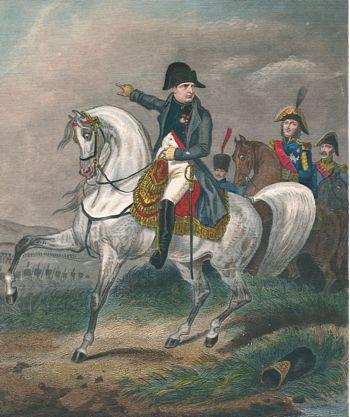
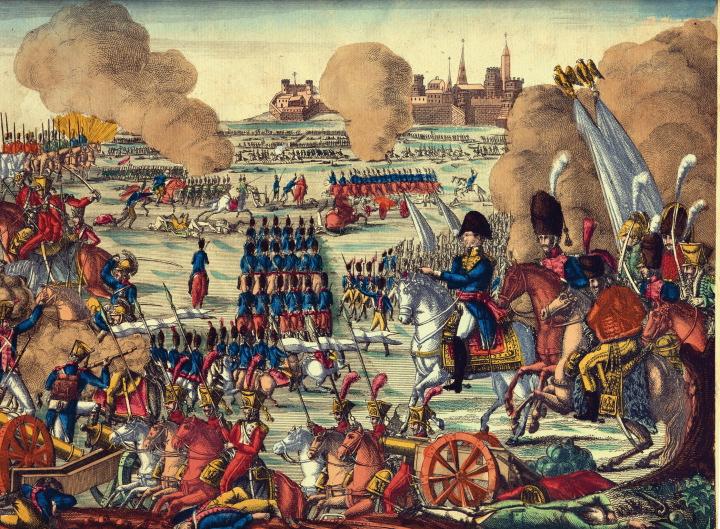

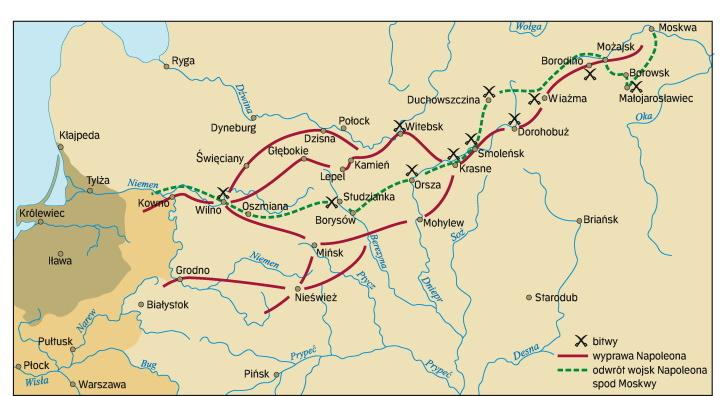



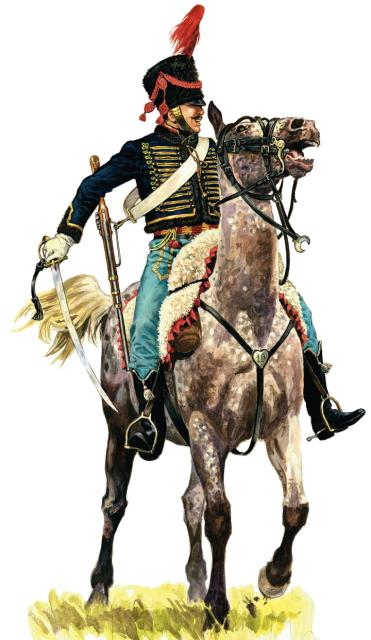
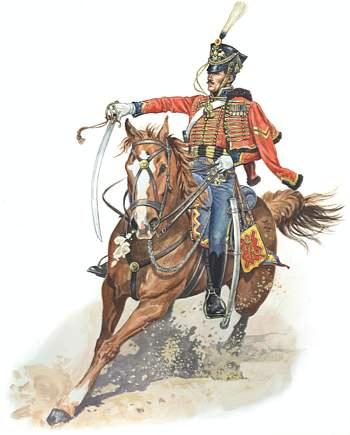
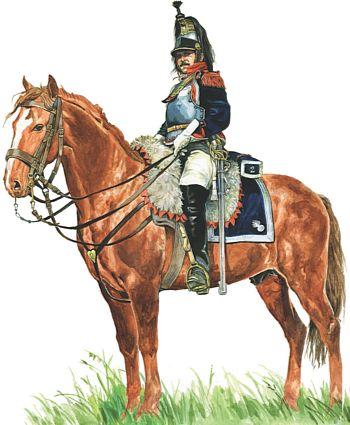
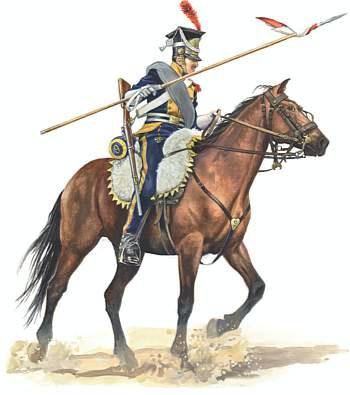


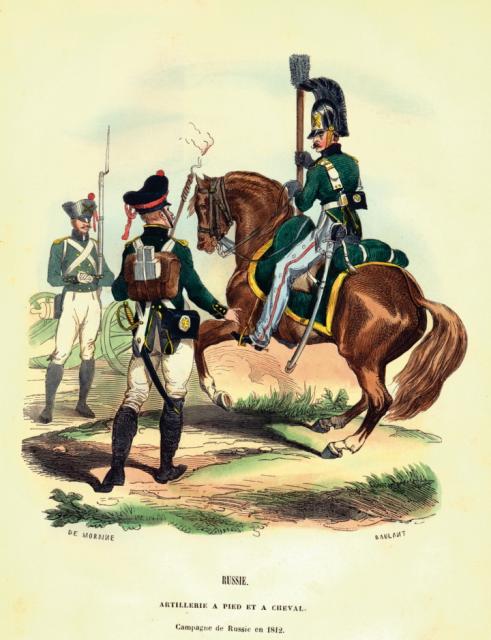
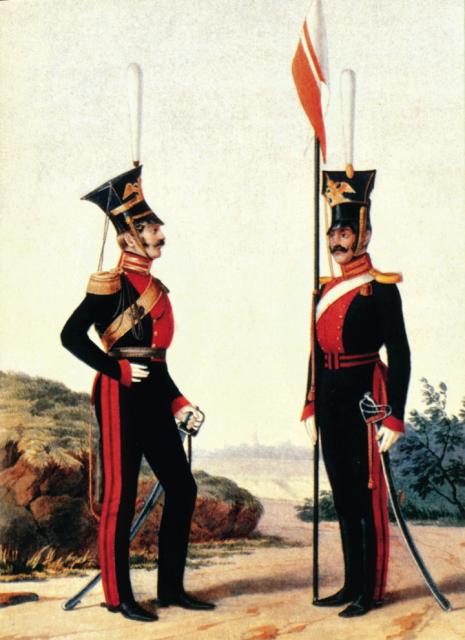
No comments:
Post a Comment